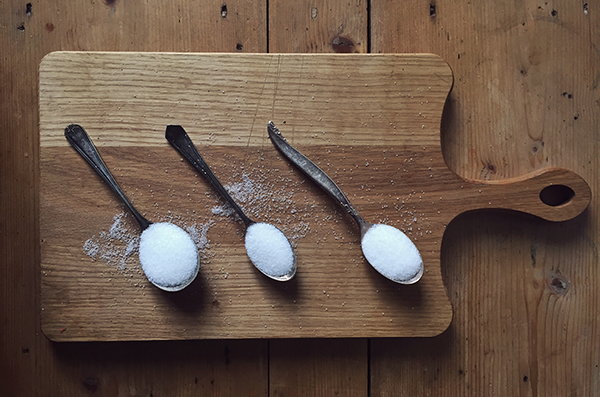The post Big companies are buying organic, but are they selling the real thing appeared first on Miss Foodwise.
]]>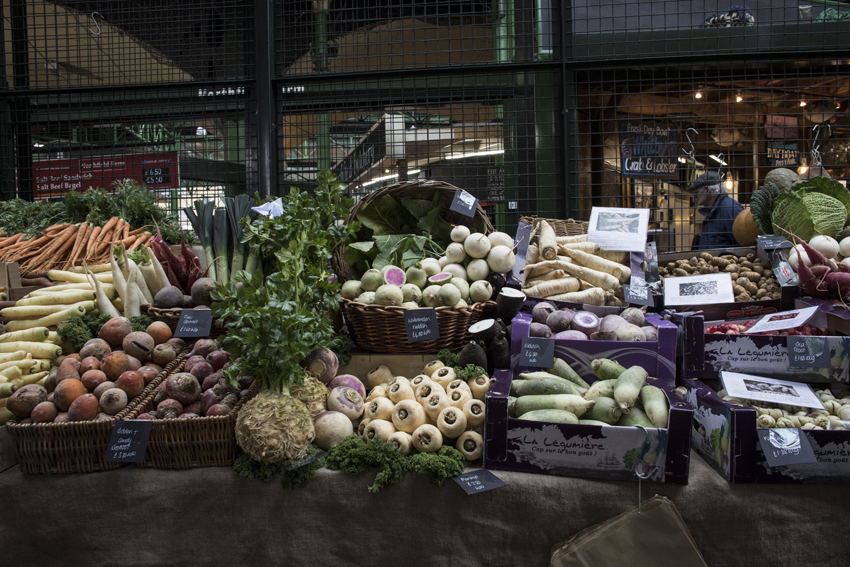
Vegetable display at Borough Market, London
Amazon just bid nearly 14 billion to buy Wholefoods…
There is something about the organic & health food narrative that is increasingly starting to worry me. A couple of years ago you had to go to small often obscure shops for organic food, natural products and local produce, but recently we’ve started to see a lot of mainstream supermarkets jumping onto the bandwagon, introducing a dedicated spot in their shop to organic vegetables and fruit. A great evolution I thought at first. In Belgium a supermarket chain even decided to launch an organic version of their store. They now have 25 large stores and 80 pick-up points, in a country with about 11 million inhabitants this is huge. It sends out the right signal that more people want to make a more conscious choice when it comes to food. In the UK and US we’ve known Wholefoods for some time now but todays news that Wholefoods has been bought up by the big giant Amazon got me feeling more puzzled than excited…
I started to dawn on me that in one of those big superstores organic isle I spotted potatoes from Egypt and pears from Mexico…
I want everyone to eat organic so that more farmers can survive growing organic or biodynamic fruit and veg in a way the land is nourished instead of raped. I want people to eat far less meat but buy more ethically reared meat. Meat from animals reared in good conditions, outdoors on grass instead of concrete, it doesn’t even have to be organic (getting certified organic is very troublesome for animal farms in many countries), kindness in this case is good enough for me. We can no longer tolerate factory meat farms and need to go back to the ancient method of crop rotation.
Farms have to get a fair price for their product. The whole idea of buying organic is to support small scale businesses and also to cut out the big capitalist corporations with it. All those who make money from the little man without giving much back to society because big holdings like that often do not pay taxes, or little taxes in the countries where they sell their product. (See this New York Times article for more info) Buying organic is a direct protest against that big corporate giant that sells crop seeds that can not be – or are forbidden to be saved for the next planting season, a practice which has been the natural way of growing crops since the beginning of time. Don’t even get me started about the amount of bees that are dying because the chemical shit that is sprayed onto crops (see this Greenpeace article for more info)
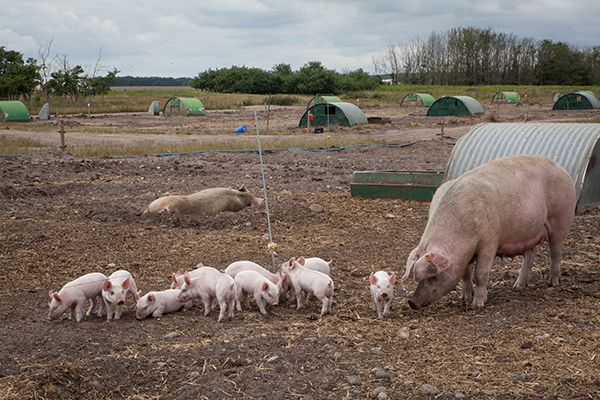 Buying organic also means buying local because the organic philosophy and that of the environmental brigade is largely the same. I buy my meat either at Northfield Farm at Borough Market when I’m in London or my local meat farm where just like at Northfield Farm but in much smaller scale, animals are treated with respect. Potatoes, often these days of inferior quality, are best from another local farm in my area, they still come with an few millimeters of earth on them, which helps them to keep for longer. If I can’t make it to the farm, I buy organic spuds but recently I started to dawn on me that in one of those big superstores organic isle I spotted potatoes from Egypt and pears from Mexico… Why do we need organic potatoes from Egypt while we are surrounded by potato fields in this spud loving country?
Buying organic also means buying local because the organic philosophy and that of the environmental brigade is largely the same. I buy my meat either at Northfield Farm at Borough Market when I’m in London or my local meat farm where just like at Northfield Farm but in much smaller scale, animals are treated with respect. Potatoes, often these days of inferior quality, are best from another local farm in my area, they still come with an few millimeters of earth on them, which helps them to keep for longer. If I can’t make it to the farm, I buy organic spuds but recently I started to dawn on me that in one of those big superstores organic isle I spotted potatoes from Egypt and pears from Mexico… Why do we need organic potatoes from Egypt while we are surrounded by potato fields in this spud loving country?
Are the super stores looking for the cheapest option instead of the local again, even for their organic isle? Bypassing the small independent farmers who work the land we see around us?
There is a sign on the wall that organic means big business for the capitalist giants. Amazon buying up Wholefoods is just a confirmation of that fear I have. Again those organic, small scale and local businesses are basically owned by a big corporation that wants nothing more than to make a profit.
Now more than ever it is important to find local farms, to join a CSA (Community-supported agriculture), buy online straight from those small scale or organic brands that you love, or go to your small local organic shop or market, they could do with your support.
If you see organic potatoes from Egypt in your store, it is still better to buy non-organic potatoes which were grown in your country, or a neighbouring country.
And that brings me to my final point. Just before the announcement came that Amazon was to buy Wholefoods, that same company introduced a tool for your fridge with their Alexa technology. Read this article on “What Amazon’s Purchase of Whole Foods Really Means” in the New Yorker. Here in short it explains the technology
Last week, two days before announcing that it would be acquiring Whole Foods, Amazon released a short promotional video for a new product called the Dash Wand. The Wand is a candy-bar-size gizmo that costs twenty dollars. It sticks to your refrigerator with magnets and lets you order products by talking—it features Amazon’s voice assistant, Alexa—or by scanning barcodes. In the video, an affluent, middle-aged couple drift through their spotless kitchen, preparing for a dinner party. The woman peers into the fridge, where she discovers a bag of pre-peeled shrimp. She asks the Wand for a simple shrimp-pasta recipe, then orders ingredients for it, scanning the barcode of an empty jar of pasta sauce and proclaiming, “Mushrooms!” The next day, these items are delivered in a cooler bag.
Some might say handy, others might say the death of your small local shop or farm scheme. I for one enjoy going to my local organic shop and having a quick chat with the lovely lady who owns it. I love asking for advise on meat at the butchers, fish at the fishmongers, and on many occasions people in the shop have asked me about food when they saw me packing something they did not know but always wondered about. Just last week I explained to the lady at the till what she could do with pappadums. It’s brilliant. Human contact is essential to our society, a tool like that when fully incorporated into our lives will make us even more out of touch with the outside world. We can all stay inside, tell a computer to turn on the dishwasher, and to order all you need for a pasta carbonara… heaven forbid we might take the bicycle and drive to the shop for bacon, pasta and eggs… we might run into human being and actually have a conversation.
You might also like:
A short and eye-opening video by Riverford Farm: Pesticide-free farming is possible
On my own website:
The post Big companies are buying organic, but are they selling the real thing appeared first on Miss Foodwise.
]]>The post How free range is your bacon? appeared first on Miss Foodwise.
]]>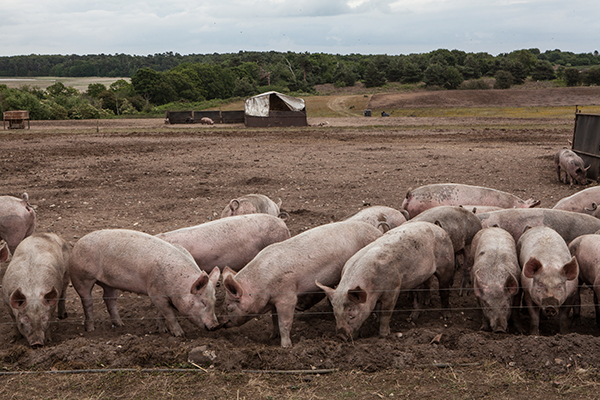 |
| kisses on the free range fields |
It came as a bit of a surprise to me that less than 3% of the pork in the UK is actually truly ‘free range’. You think if you choose for the ‘freedom foods’ or ‘red tractor’ label, you’re sorted, but no, that doesn’t mean your bacon is free range at all.
To learn more, I ventured out to sunny Suffolk to meet up with second generation pig farmer Alastair Butler on their family farm Blythburgh Free Range Pork.
As it turnes out, a lot of the pork we think to be free-range, has actually not had a better life than a pig in an intensive farm. We assume when we spot the label ‘outdoor bred’ or ‘outdoor reared’ that it is free-range, only it isn’t.
First we have to understand how pig farming works.
There are two stages or herds, the ‘breeding herd’ – these are the sows and the newly born piglets, and the ‘finishing herd’ where the piglets go after they are weaned which is after about four weeks of age.
In the majority of the higher welfare farms, the high welfare terminology only applies to the first herd, the sows and their babies.
Outdoor bred and outdoor reared is NOT free range pork.
Outdoor bred: this means the breeding herd is kept free range but the after the piglets are weaned, they are moved indoors to the finishing herd where they are intensively reared. The pork from these pigs will not be any different from your average intensive farm.
Outdoor reared: here the breeding herd is free range too, and the finishing herd is kept in a semi outdoor arrangement of tents or huts. The pigs do not have free access to the outside, and are confined to these huts and tents at all times. Alastair refers to this arrangement as ‘intensively reared outdoors.’
Free range: here the breeding herd is free range, and the finishing herd is kept in an even larger free range space. This is the only true higher welfare farming system.
Blythburgh is one of the largest free range farms in the UK, this means that the pigs have an incredibly large amount of land to roam freely. The animals grow slower, which means the fat has been around the muscle for longer and therefore delivers more flavour.
But for Alastair the welfare of the pigs is what’s most important, he steps into the field with his dad and nearly all of the pigs in the field come storming towards him to see what is going on and have a sniff on the farmers leg and shoes. “This is what it’s all about” he says “pigs showing their natural behaviour which is that they are incredibly curious and clever animals”.
I asked him if he is still smitten with the breeding herd after years of seeing piglets being born, and he tells me that he still loves everything about the breeding herd, but the fact that they have to keep the sows on a more confined paddock means he prefers to visit the finishing herd which looks to me like a gang of friends having a nice play in the sand rather than a bunch of farm animals being finished for slaughter.
The natural behaviour of a pig is to root in the soil and eat the mud, they love a good dust bath or wallow in the muddy pools and enjoy a good run. Imagine if you would place an animal like this on a concrete floor, with no light apart from a couple of industrial lights if they are lucky. No fresh air, nothing. Farrowing crates contain the sows, they are so tight that they can not turn, they can not stand, they just have to lie there. Piglets are taken from these animals after birth, while pigs are known for being good mothers, imagine what the animal must be feeling. And that is what is important, we can’t ignore that animals have feelings. Farm animals are no different from pets. It is important to take a stand against intensive farming, and eat less meat, but choose to buy high welfare meat.
Ask your butcher where the meat comes from, investigate by looking up the farms website to see that you are getting your money’s worth in free range meat.
There is no room in this day and age for animal abuse, so find a free range source for your meat.
From farm to plate
 |
| The breeding herd |
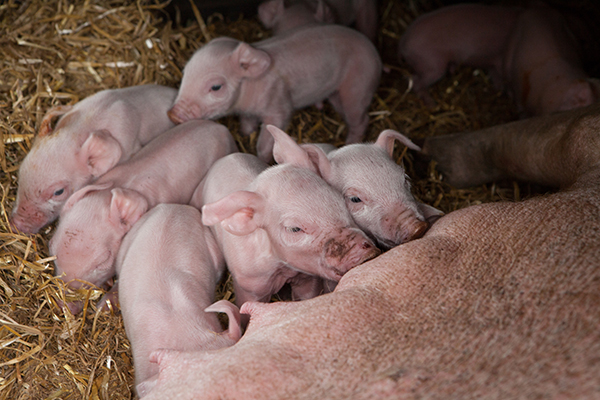 |
| A happy mama and her babies fighting over the best teat |
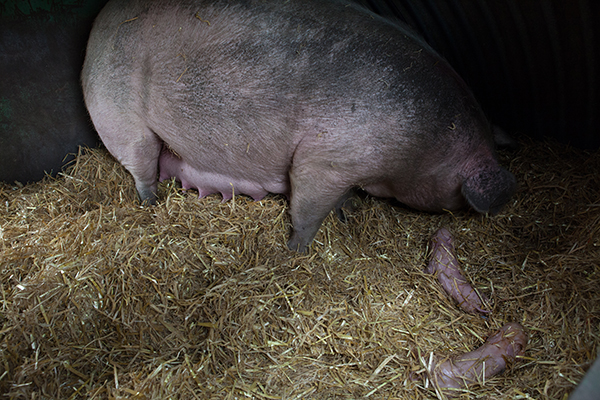 |
| And suddenly another mama started farrowing, she covered her piglets in straw to keep warm |
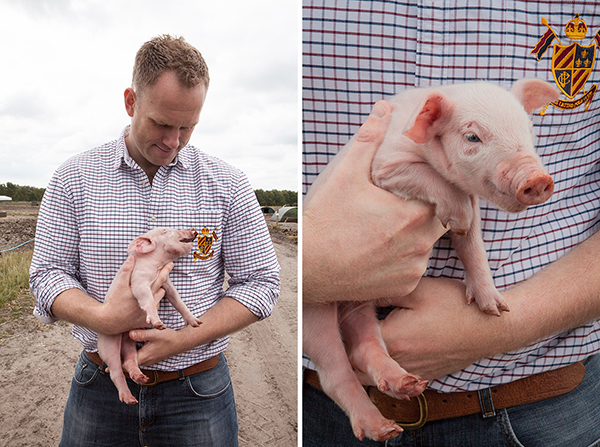 |
| Alastair Butler and his piglets. I got to hold her too, she fell asleep on me. |
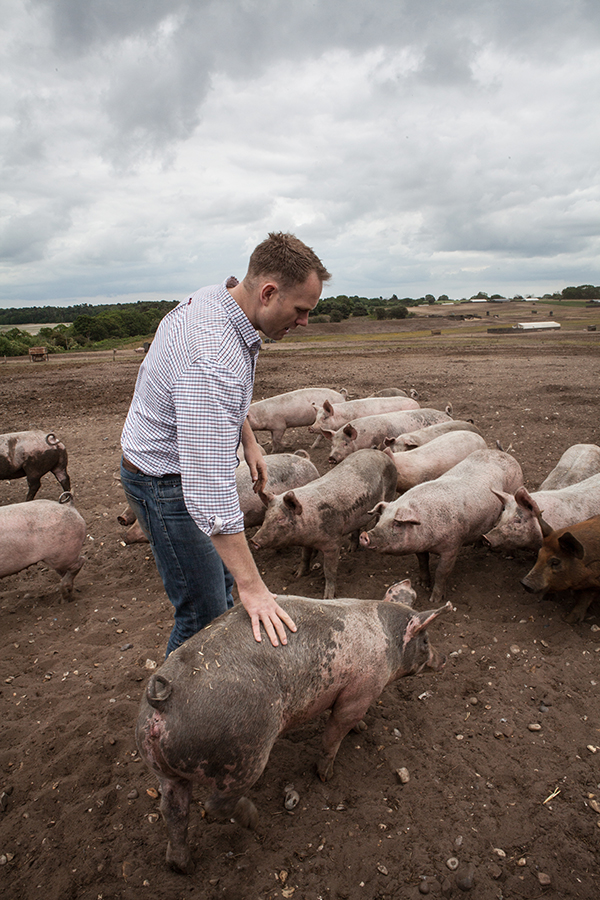 |
| A curious bunch – the finishing herd. |
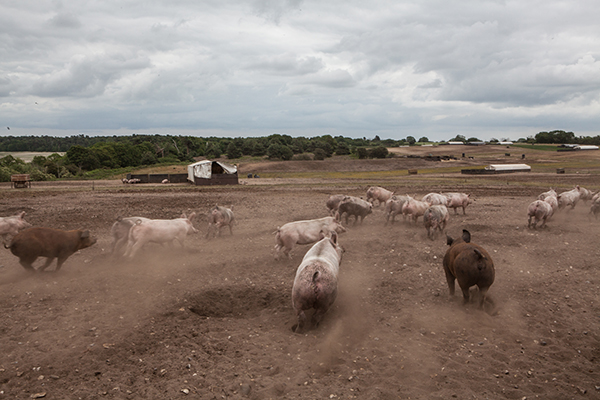 |
| Didn’t I say they love a good run? |
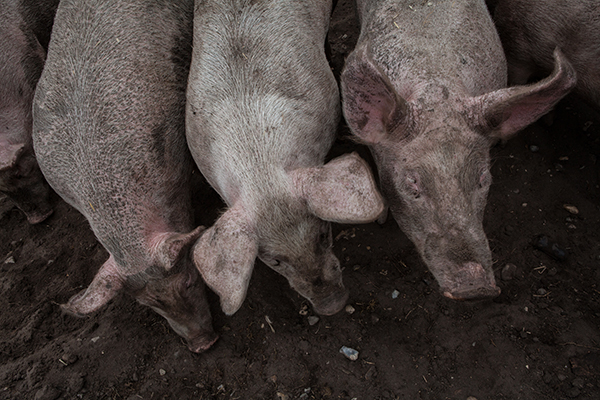 |
| And that they love to eat and root around the mud? |
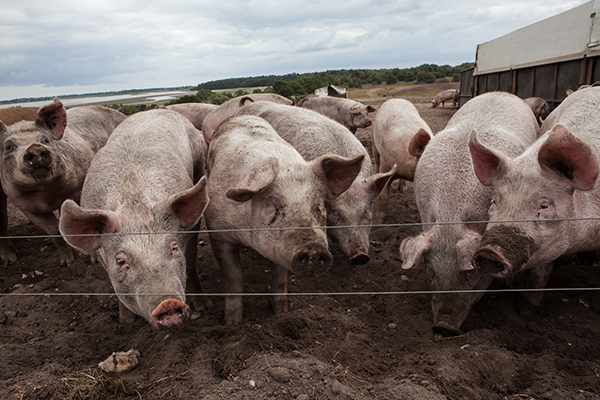 |
| Are you looking at me? Well you’re looking at us human! |
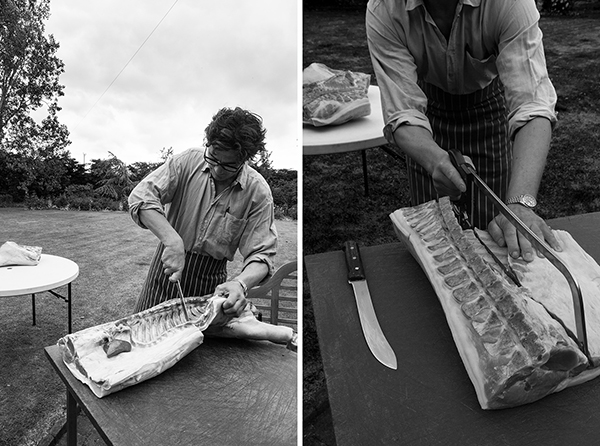 |
| Slaughtered and butchered by Gerard King. |
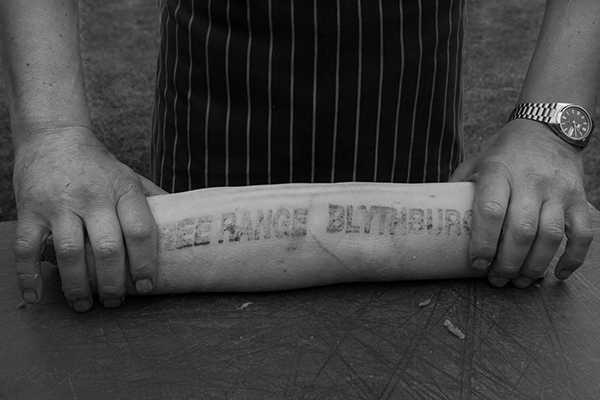 |
| The mark, so you know what you get. |
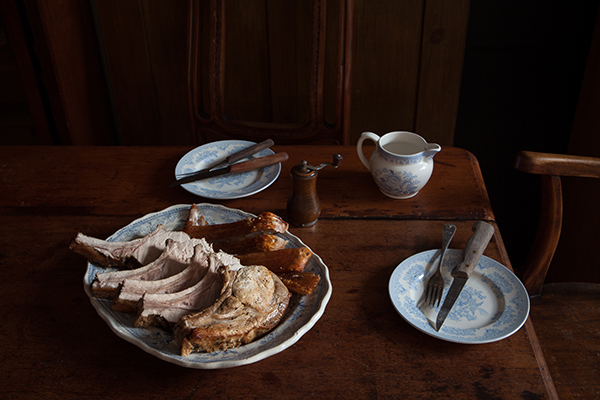 |
| The final stage – the table. |
Thank you very much for inviting me to your family farm Alastair, and for the beautiful pulled pork lunch your mother made us. Thanks Gerard King from craft butcher Salter and King for a butchery demonstration to round up the day and the process from birth to slaughter. Good meat can’t be taken for granted, it has to be respected.
Recipe for the roast coming soon.
My views are my own.
The post How free range is your bacon? appeared first on Miss Foodwise.
]]>The post A surcharge on sugary drinks versus IKEA fruit water appeared first on Miss Foodwise.
]]>Meanwhile across the channel, a chef has had enough and is campaigning for a tax on sugary drinks – all sugary drinks, even the ones with 50% less sugar.
I thought the press might be all over this, I thought it would explode on health blogs and yet… all remained quiet. As I am getting ready to attend a food symposium in the UK with the theme ‘Food and Communication‘ I found it fitting to have a rant about how this communication by IKEA* is misleading us all.
From september 2015 they will ban all sugary fizzy drinks from their restaurants. That’s the headline and that’s the lie. Proudly they are replacing their imitation Pepsi and 7up with more healthy fruit waters which contain only half the sugar. Half the sugar. That’s still too much sugar.
The World health organisation (WHO) say that we ideally should be consuming no more than 6 teaspoons of sugar a day. **Regular fizzy drinks contain up to 6 teaspoons per 330ml serving. That’s your daily sugar intake in one glass of sweet drink. That is bad.
So if IKEA’s fruit water contains ‘only’ half the amount of sugar of your average fizzy drink – it still contains about a whopping **3 teaspoons of sugar.
When having one glass of IKEA fruit water means you have consumed half the daily recommended amount of sugar. And you know what? They offer FREE REFILLS! So you can have more!
“Ikea schrapt frisdrank van het menu”
(Ikea bans sugary fizzy drinks from menu)
The communication to the world is that IKEA is trying to get a more healthy reputation… I think they are misleading the consumer with it.
Firstly their fruit waters aren’t healthy, nor are they more healthy because they contain ‘only’ 50% the amount of a regular pop per serving. Secondly they are motivating people to refill their cup at self service machines, so people can have another 3 teaspoons of sugar diluted in water with natural flavourings.
My advise to IKEA.
Serve water with real fruit, just fruit – no added sugar, no added colourings.
How do you do this?
Fill a jug or a barrel with water, just water, and just toss in sliced cucumbers, apples, strawberries or whatever fruit. Then and only then you have FRUIT WATER, and not fizzy drink with natural fruit flavours and only half the sugar.
I understand that this would make your system of free refills at a machine impossible, but I think we are outgrowing the machines and are yearning for human contact again. Then and only then will you be making the change you are shouting about right now. Then and only then will you be truthful with your customers. Right now, you are contributing to a world-wide problem of children and adults being overweight due to an extreme sugar intake. All because people buy foods and drinks which are low in sugar, to then consume double.
A surcharge or tax on sugary drinks
The contrast with another news item this month is stark.
Jamie Oliver is making good of his crusade to tax sugary drinks and is putting a surcharge on sugary drinks in his restaurants. The money from the surcharge will go to a charity that supports children’s health across Britain.
Jamie Oliver says that he expects the surcharge to raise £80,000 over the next year. He will donate the money to Sustain, a charity that “support’s children’s health food initiatives across Britain.
He told the Sunday Times: ‘I was born into the restaurant industry and I truly believe that by joining together on this issue we not only send a powerful and strong message to government but we also have the potential to make a longlasting legacy that could ripple across the world.
‘I’ve seen first-hand the heartbreaking effects that poor diet and too much sugar is having on our children’s health and futures. Young children are needing multiple teeth pulled out under general anaesthetic and one in three kids [is] now leaving primary school overweight or obese.
‘Soft drinks are the biggest single source of sugar among school-age kids and teenagers and so we have to start here.’ The chef said an explanation of the sugary drink levy will be printed on all his menus and waiting staff will be able to offer alternative healthy drinks for children.’
Quite a different story from, we’re cutting down on sugar but you can still go for a refill so you can have all the sugar you want.
What Jamie Oliver is doing is being honest about the fact that the sugary drinks on his menu aren’t healthy. And by adding an explanation to why he is adding the surcharge he is educating people rather than trying to ban the sugary drinks all at once. Banning something will only make people want it more, but telling them about the dangers of excess sugar intake will maybe make people want to give up, or reduce their consumption of sugary drinks. What Ikea does is claiming their sugary drinks are healthy, and that is where they go wrong.
Further reading/watching
The Truth about Sugar BBC 2015 >
How much sugar is in your fizzy drink >
World Health Organisation recommends adults should have no more than 6 tsp of sugar a day >
Tax on sugary drinks to reduce obesity a study says – The Independent >
In Flemish
Ikea schrapt fristdrank van het menu (en vervangt het met fruitwater met 50% minder suiker) De Standaard >
Jamie Oliver heft belastingen op frisdrank – De Standaard >
Sources: Sunday Times, The Independent, Eater, De Standaard, BBC, WHO, press release IKEA
*This post is about IKEA BELGIUM, I have no idea what the situation is in other countries.
** I do not know how many teaspoons of sugar their fizzy drinks contained so used an average quantity. I will of course alter the numbers if they become known to me.
Apologies to my readers for going off-topic on this blog, but I truly believe you can’t be a foodie without being a food activist.
The post A surcharge on sugary drinks versus IKEA fruit water appeared first on Miss Foodwise.
]]>